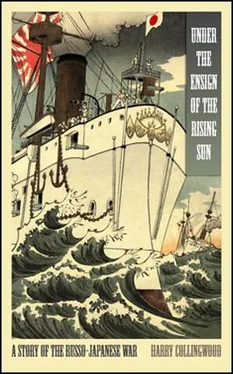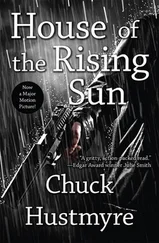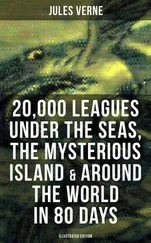Harry Collingwood - Under the Ensign of the Rising Sun
Здесь есть возможность читать онлайн «Harry Collingwood - Under the Ensign of the Rising Sun» весь текст электронной книги совершенно бесплатно (целиком полную версию без сокращений). В некоторых случаях можно слушать аудио, скачать через торрент в формате fb2 и присутствует краткое содержание. Год выпуска: 1916, Жанр: nonf_military, на английском языке. Описание произведения, (предисловие) а так же отзывы посетителей доступны на портале библиотеки ЛибКат.
- Название:Under the Ensign of the Rising Sun
- Автор:
- Жанр:
- Год:1916
- ISBN:нет данных
- Рейтинг книги:4 / 5. Голосов: 1
-
Избранное:Добавить в избранное
- Отзывы:
-
Ваша оценка:
- 80
- 1
- 2
- 3
- 4
- 5
Under the Ensign of the Rising Sun: краткое содержание, описание и аннотация
Предлагаем к чтению аннотацию, описание, краткое содержание или предисловие (зависит от того, что написал сам автор книги «Under the Ensign of the Rising Sun»). Если вы не нашли необходимую информацию о книге — напишите в комментариях, мы постараемся отыскать её.
Under the Ensign of the Rising Sun — читать онлайн бесплатно полную книгу (весь текст) целиком
Ниже представлен текст книги, разбитый по страницам. Система сохранения места последней прочитанной страницы, позволяет с удобством читать онлайн бесплатно книгу «Under the Ensign of the Rising Sun», без необходимости каждый раз заново искать на чём Вы остановились. Поставьте закладку, и сможете в любой момент перейти на страницу, на которой закончили чтение.
Интервал:
Закладка:
It must not be supposed, however, that the attack was about to be made on the spur of the moment and without any previous preparation. On the contrary; for two whole months the Japanese had been steadily sapping from the north and north-west, day and night, in face of the most vigorous and determined opposition on the part of the Russians, first constructing a parallel about a hundred yards from the first line of Russian trenches, and, from this parallel, driving saps which pierced the wire entanglements and in two places reached to within fifty yards of the Russian line. And while this was being done, four of the new Japanese 11-inch howitzers concentrated their fire upon the works on the twin summits of the hill.
The assault was ordered for the evening of 27th November. Supported by a heavy bombardment from the howitzers and batteries in their rear, the troops chosen for the assault broke cover and rushed the first line of Russian trenches, bayoneting the occupants almost before the latter had time to open fire upon them. Then followed hand-to-hand fighting of the most ferocious and sanguinary character, which lasted all night. Morning found the assailants still in possession of the trench which had been won; and now, strongly reinforced, the Japanese proceeded to push forward to attack the summit and Akasakayama battery. Immediately, the Russian guns in the neighbouring forts opened fire upon the stormers with shrapnel and heavy shell, and in a very few minutes the entire scene was so completely veiled in powder smoke that it was impossible for anyone to tell exactly how the fight was going. Four times the Japanese stormed the crest and were beaten back; and it was not until three o’clock in the afternoon, when they delivered their fifth assault, that they at last burst through the wire entanglements and reached the crest. For a time they held it; but the Russian fire was too hot for them, and at length they were not only driven off the crest but also out of the trench which they had won on the previous night.
The attack was resumed the next day, and again resulted in failure.
Then the Japanese Staff put its foot down and declared that both hills must be taken, at all costs! The cruisers Sai-yen and Akagi were ordered round to Pigeon Bay to co-operate with the troops by covering the assault with their fire; but, unfortunately, as the Sai-yen was getting into position on the 30th, she struck a mine and sank, not far from where the old Hei-yen disappeared some two months earlier. This put an end to the plan for naval assistance, and the land forces were obliged to rely entirely upon themselves. Fighting of the most desperate and sanguinary character proceeded all through the afternoon and night of 30th November, but it was not until the next day that the indomitable courage and persistence of the Japanese were rewarded with success; the western summit of 203 Metre Hill being taken by them and held all day, despite the most desperate efforts on the part of the Russians to retake it.
This was the beginning of the end, so far as Port Arthur was concerned. On 5th December the eastern summit of the hill also fell into the hands of the Japanese, and next day they secured possession of Akasakayama, thus obtaining command of the entire Metre range.
These important positions in their possession, the tide of war at once turned in favour of the Japanese, for the heights commanded not only the town but the harbour of Port Arthur; and the big 11-inch howitzers, as well as a battery of naval 6-inch and 47-inch guns, were at once brought up, and the bombardment of the Russian warships was begun. On 6th December the Poltava was sunk by the Russians to save her from destruction by the Japanese fire. Next day the Retvisan met a like fate, while a fire broke out aboard the Peresviet , and on the 8th she and the Pobieda were at the bottom of the harbour, while the Pallada was obviously following them. On the following day the Bayan was hit no less than twenty-two times, bursting into flame shortly before noon and burning until shortly after four o’clock in the afternoon, while the Sevastopol was seriously damaged. The mine-laying ship Amur was also hit and sunk. The dockyard sustained serious damage, yet, strangely enough, all through this bombardment the Russians did little by way of reply; they seemed overwhelmed and paralysed at the misfortunes which were now befalling them—or else, as some of us began to shrewdly suspect, their ammunition was at last exhausted. On the 9th of the month the Sevastopol —the only Russian battleship still remaining afloat in the harbour—moved from her moorings and sought refuge behind a big boom under the guns of Mantushan fort, on the Tiger peninsula, where, a few nights later, she was energetically attacked by our destroyers. These attacks were repeated nightly, with considerable loss to our side, until the night of 15th-16th, when the ship was successfully torpedoed. Her end was so evidently near now that we ceased our attacks; but nothing could save her, and on the 20th of the month her captain took her out into deep water, opened her Kingston valves, and sank her, so that she might not fall into the hands of the Japanese.
Meanwhile, North Kikwan fort was captured by our troops on the night of the 18th, after a fight which cost us close upon a thousand men. Two days later, we took a battery close to it; and on the 28th, the formidable Erhlung became ours after a tremendous fight. Success after success on our part now followed each other rapidly, each additional capture firing our troops with renewed courage and determination. The last day of the year saw Sungshushan fort fall to us, and the first day of 1905 saw the New Panlung and H batteries in our hands, the Chinese Wall breached, and the Japanese flag planted well within the Russian defences. Wangtai fort was stormed and taken on the afternoon of the same day, and as twilight was closing down upon the scene a Cossack, bearing a large white flag, was seen riding out of the Swishiying valley, followed by a Russian officer.
The officer was the bearer of a letter from General Stoessel to General Nogi, inviting the latter to open negotiations with the writer “to determine the conditions of surrender” of Port Arthur. Needless to say, the Japanese general gladly, yet without undue haste, acceded to Stoessel’s proposal; and at noon of 2nd January 1905, Major-General Ijichi met Major-General Reiss at Plum Tree Cottage, a miserable little hovel situated in the village of Swishiying, and the negotiations were opened which resulted in Port Arthur passing into the possession of the Japanese on the evening of that day, although the Russian evacuation did not take place until the 5th of January.
Chapter Twenty.
THE BATTLE OF TSUSHIMA.
Meanwhile, what had become of the Japanese navy, after the battle of the Yellow Sea?
So far as the Yakumo was concerned, we were in the very thick of the fight when it was at its hottest, and when at length the battle came to an end with the flight of the Retvisan and Pobieda , we were one of the ships which had been so severely mauled that extensive repairs were necessary before we could undertake further service. Accordingly, we were ordered to proceed forthwith to Sasebo to refit; and since we were by no means alone in our plight, we had to await our turn. Hence it was the middle of January 1905 before the Yakumo was again ready for sea; and in the meantime I had ample opportunity to cement my friendship with the members of the Boyd family, who had acted the part of Good Samaritan to me when I first made acquaintance with Sasebo.
The day before the Yakumo left Sasebo for our rendezvous at the Elliot Islands, news arrived that the long talked-of Baltic Fleet had reached Madagascar and was at anchor in Passandava Bay, refitting, provisioning, and generally enjoying the hospitality of the French nation. This, of course, was not the first news that we had received of it; we had been duly apprised of its departure from Libau on 15th October and had also heard—with surprise on the part of the Japanese, and with bitter mortification and shame on my own part—of its subsequent unprovoked and unpunished attack upon the Gamecock fleet of British trawlers; but nobody was in the least disturbed by the news that this formidable fleet was at last actually at sea, for as a matter of fact we in Japan regarded its departure as nothing more than a move on the part of the Russian Government intended to encourage the garrison of Port Arthur to continue its resistance. For, to speak the plain truth, nobody seriously believed that the voyage would ever be continued far beyond the western extremity of the English Channel, for we could not see how it was going to be done. But now , when it was apparent that France was openly ignoring and outraging all the laws governing neutral nations, in favour of Russia, it behoved Japan to take serious notice of what was happening, and she not only protested vigorously against France’s violation of neutrality, but set to work in earnest to prepare for the new menace which was gradually creeping closer to her shores.
Читать дальшеИнтервал:
Закладка:
Похожие книги на «Under the Ensign of the Rising Sun»
Представляем Вашему вниманию похожие книги на «Under the Ensign of the Rising Sun» списком для выбора. Мы отобрали схожую по названию и смыслу литературу в надежде предоставить читателям больше вариантов отыскать новые, интересные, ещё непрочитанные произведения.
Обсуждение, отзывы о книге «Under the Ensign of the Rising Sun» и просто собственные мнения читателей. Оставьте ваши комментарии, напишите, что Вы думаете о произведении, его смысле или главных героях. Укажите что конкретно понравилось, а что нет, и почему Вы так считаете.












